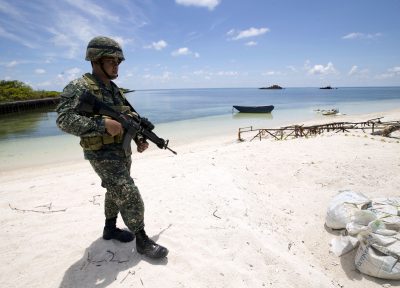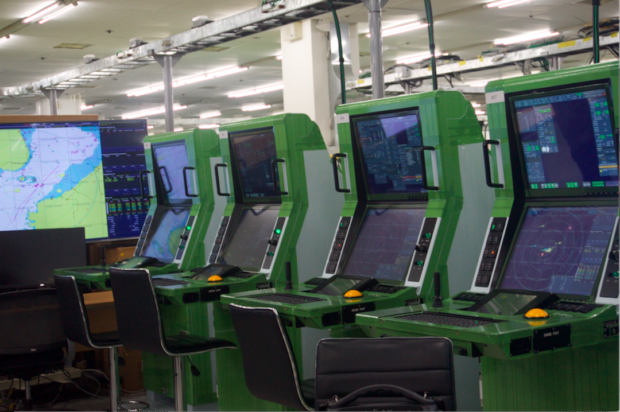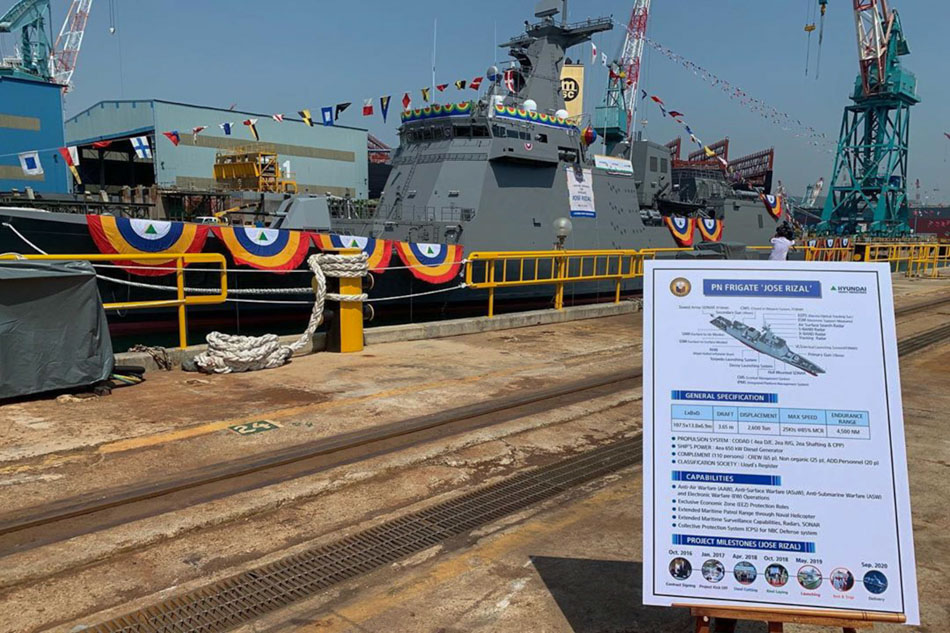From the East Asia Forum (May 24, 2019):
The standoff at Sandy Cay in the South China Sea24 May 2019 (By Mark J Valencia, National Institute for South China Sea Studies)
The appearance of a new natural feature in the Spratly Islands — Sandy Cay — is causing a dangerous standoff over its ownership.

Sandy Cay is actually three coalescing sand bars situated between Philippines-occupied Thitu and China-occupied Subi. They are now above water at high tide, so they are legal ‘rocks’. According to the UN Convention on the Law of the Sea, this entitles them to 12 nautical miles (nm) of territorial sea. A territorial sea is the sovereign territory of a state and this sovereignty extends to the airspace above, the seabed below and the associated natural resources.
Given the sweeping claims to parts of the South China Sea, a dispute over the ownership of a sandbar would ordinarily not be a big deal. But these sandbars offer a significant strategic and legal position in the area, likely underlying the recent tiff between the Philippines and China. China appears to be trying to
protect its sovereignty claim over Sandy Cay. Indeed,
according to the Philippines’ Ambassador to China, Chito Sta. Romano, China is ‘watching Sandy Cay’.
The current contretemps arose in January 2019 when a swarm of about 275 Chinese vessels appeared near Thitu. The Philippines declared that the presence of the vessels violated its ‘sovereignty, sovereign rights, and jurisdiction’. Many thought this swarm was a response to the Philippines’ construction on Thitu — China feared the Philippines might give the US military access to the feature. It may have started out that way, but the issue has now become more complicated.
Like Sandy Cay, Thitu is an above high tide feature entitled to 12nm of territorial sea. China claims and
occupies Subi Reef — about 16nm to the west. Subi is a low tide natural feature, so it is not legal ‘territory’ and cannot be claimed as such by any nation. Thus, it is not entitled to a territorial sea.
The Philippines’ position is that China’s sovereignty claim to Subi is invalid and that it lies within the Philippines Exclusive Economic Zone and on its continental shelf. But Subi also lies within the 12nm territorial sea of Sandy Cay. Both China and the Philippines claim these sandbars outright as their sovereign territory and indirectly because they are situated within Thitu’s territorial sea. Since both claim Thitu and its territorial sea, they believe they have the right to both fish there and to exclude the other’s fishers.
If China were the sovereign of either Thitu or Sandy Cay, it would validate both its claim and occupation of Subi. And if China gains sovereignty over these sandbars, the theoretical legal boundary between the sandbars and Thitu would be the median line. China and the Philippines may try to
assert their sovereignty in various ways in the waters both claim, setting the stage for possible future conflict.
China has reason to be concerned about possible aggressive Philippine actions regarding Sandy Cay. In 2017, the Philippines began building fishermen’s shelters on these sandbars. China objected and its ‘maritime militia’ formed a ‘blockade’ to prevent Philippine fishermen from accessing Sandy Cay, and from fishing in what it considers its territorial waters. It cited the non-binding 2002 ASEAN–China Declaration of the Conduct of Parties in the South China Sea that
forbids ‘inhabiting on the presently uninhabited islands, reef, shoals, cays’. Philippine President Rodrigo Duterte
ordered the shelters to be dismantled and the construction to stop. In the present situation, China may fear a similar Philippine move.
This situation is potentially dangerous for all concerned. Heightening tensions and the possibility of a clash, the Philippines Supreme Court
ruled that the government must enforce international conventions and domestic laws that protect the
environment and fisheries at three disputed areas — Scarborough Shoal, Second Thomas Reef and Mischief Reef.
Philippine navy vessels and aircraft as well as China’s coast guard patrol the area. If the Chinese Coast Guard were to clash with or harass Philippine naval assets or soldiers, this could trigger a call for US military assistance. US Secretary of State Mike Pompeo has publicly
declared that ‘any armed attack on Philippine forces, aircraft or public vessels in the South China Sea would trigger mutual defence obligations under Article 4 of our Mutual Defence Treaty’.
Avoiding this ‘red line’, China is using its fishing boats as a maritime militia to try to intimidate the Philippines. But the US navy has hinted that in certain circumstances it will
treat China’s maritime militia as naval vessels. It should be remembered that the United States takes no position on conflicting territorial claims in the South China Sea and this presumably includes the surrounding territorial seas, so its military involvement is not a given.
Knowing this, the Philippines will have to
tread carefully and work to resolve this dispute with China on its own. Hopefully it will do so peacefully and China will accommodate its concerns. Otherwise the standoff at Sandy Cay could well turn into the confrontation at Sandy Cay — or worse.
[Mark J Valencia is Adjunct Senior Scholar at the National Institute for South China Sea Studies (NISCSS), Haikou, China]https://www.eastasiaforum.org/2019/05/24/the-standoff-at-sandy-cay-in-the-south-china-sea/































